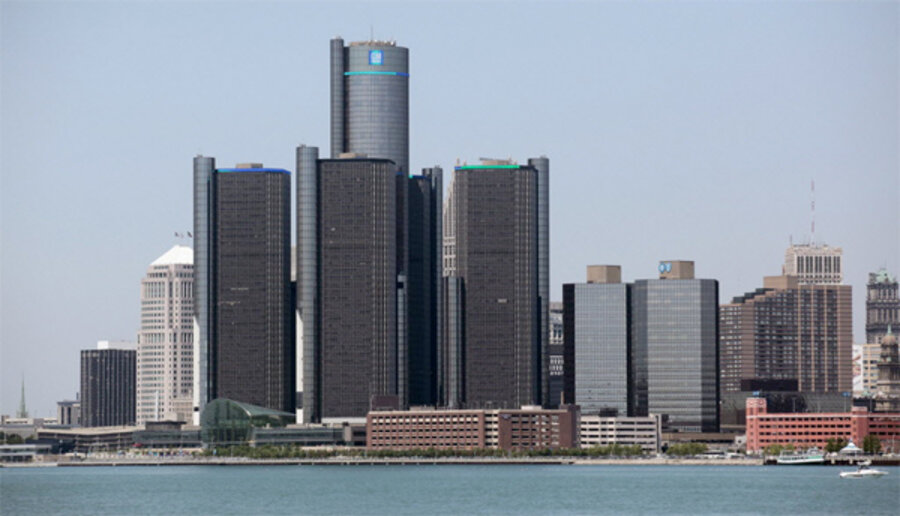Three documentaries provide new insight into Detroit
Loading...
One of the magical things for me about art in general, and documentary film in particular, is the ability to make connections, to reveal patterns in seemingly disparate parts of life.I was struck again by this when I saw the third (excellent) Silverdocs film in a row featuring Detroit as a central or strong supporting character.
Heidi Ewing and Rachel Grady’s latest effort Detropia is, as the name would suggest, set in the Motor City. While Detroit is the star of the show, as the name would also suggest, the film is bigger than Detroit. What really makes the film stand apart is Grady and Ewing’s ability to connect the dots and show how Detroit is the canary in the coal mine for the rest of the U.S. The decline of the Detroit parallels decline of the middle class and the greatest destruction of wealth this country has seen. So at its core Detropia is really about the fate of Detroit as a metaphor for the fate of all of us – will we move towards rebirth and utopia? Or crumble and slide into dystopia? The core lies in the spirit of its the scrappy residents fighting to keep the city alive. Tommy, a native Detroiter and owner of the Raven bar just outside the city, gets one of the last and most powerful lines of the film (and I’m paraphrasing here) “when you see your neighbor’s house is on fire, you need to help them put it out because you know your house will be next.”
In contrast, Hans Petter Moland’s When Bubbles Burst – a riveting and insightful look into to roots of the global financial meltdown, is set half a world away in Vik, Norway. When city officials discover that the city is nearly bankrupt thanks to some bad U.S. bonds that go belly up, they travel the globe trying to determine how this could have happened. Their first stop? Yup, you guessed it – Detroit, which they describe as ground zero for the housing crisis. Ten minutes in, the tracking shots of boarded up and burnt out homes that look more like 1980’s Beirut than anything you’d expect to see in 21st century America, are all too familiar. And as our Norwegian friends drive by the desolate and decaying multi-story building that was once one of the country’s busiest and most beautiful train stations, Tommy’s words ring in my ear. In our highly connected and globalized economy Vik, Norway might as well be a Detroit suburb – we’re all connected here and all of our houses are burning.
And then there’s Malik Bendjelloul’s Searching for Sugarman. The central character is the mysterious American folk-rock musician Rodriguez who recorded two albums in the early 70’s and quickly became a megastar in South Africa on par with Elvis and the Beatles. As one of the main characters, Sugar, puts it: “if you went into any given home in South Africa in the 70’s and 80’s and flipped through any record collection you would find three albums “Sergeant Pepper’s” by the Beatles, “Bridge Over Troubled Water” by Simon and Garfunkel and “Cold Fact” by Rodriguez.”
But unlike those other musical legends, no information exists on his background or identity. Rumors and urban legends swirl about the circumstances of his death — he shot himself live onstage during a performance, no he self-immolated, no, no, no he simply went the way of so many of his contemporaries and died of a drug overdose. In the meantime Rodriguez’ Dylan-esque voice and anti-establishment lyrics become the soundtrack to the anti-apartheid movement.
One intrepid music critic turned detective takes on the mystery and finds Rodriguez (drum roll, please…) living in Detroit. His job: gutting those same burned out homes featured in Detropia and When Bubbles Burst.
Even after he’s “discovered” (or re-discovered) and goes back to South Africa multiple times to play to sold-out stadiums full of screaming fans, Sixto Rodriguez chooses to give most of the money he earns away to friends and family, stay in his modest little Detroit home and continue gutting and renovating houses for a living.
Through Rodriguez’ eyes, Detroit is poetic, beautiful even. Like the opera singer who steals the show in Detropia by giving an impromptu concert in the decaying Detroit train station, he seems to reminding of us place that decline and rebirth are two sides of the same coin.Three different filmmaking teams covering three different continents to take on three decidedly different stories, but all with the same basic morality tale: We’re all connected and we’re all in this together; that just when they think you’re dead (be the “you” a city or musician) you can show them you’re still alive and kicking, that there’s hope for us yet, but only if we are bold enough to embrace truth, beauty and each other.
Erin Essenmacher blogs at The Film Panel Notetaker.







